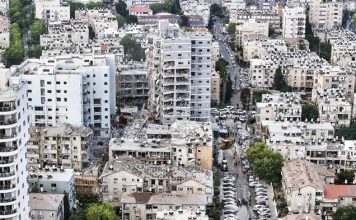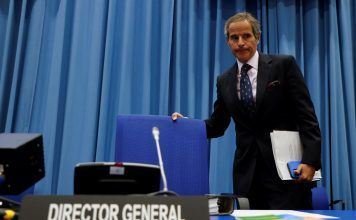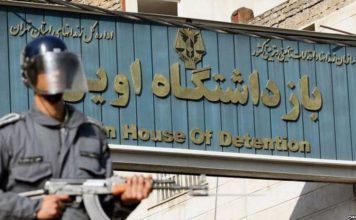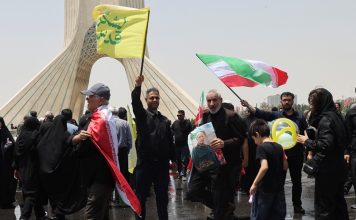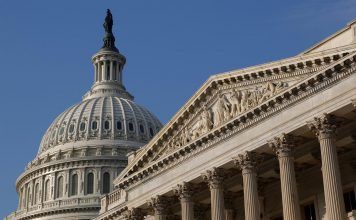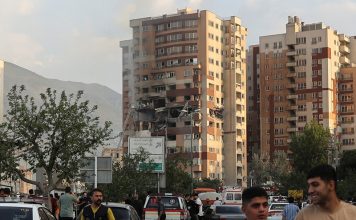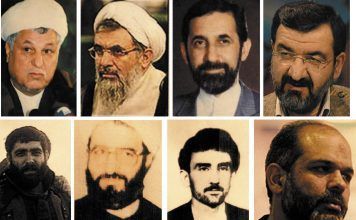
By Ahmad Rafat
The Iranian authorities intensified their use of the death penalty in the aftermath of nationwide protests, executing a staggering 834 people in 2023, a 43 percent increase from the year before, according to the 16th Annual Report on the Death Penalty in Iran, presented today in Paris by Iran Human Rights.
This was the second highest number of documented annual executions in more than 20 years in Iran. Eight protesters were executed in 2023, six of whom were arrested in relation to the ‘Woman, Life, Freedom’ protests and sentenced to death in grossly unfair trials without due process.
[aesop_image img=”https://kayhanlife.com/wp-content/uploads/2024/03/Screenshot-2024-03-01-at-21.57.29.png” panorama=”off” credit=”KL./” align=”center” lightbox=”off” captionsrc=”custom” captionposition=”left” revealfx=”off” overlay_revealfx=”off”]
The report – compiled by Iran Human Rights and by the French group ECPM (Together Against the Death Penalty) — provides an analysis of death penalty trends in the Islamic Republic of Iran.
Iran Human Rights director Mahmoud Amiry Moghaddam called on the international community and all states with diplomatic ties with the Islamic Republic to “put the death penalty on the top of the agenda in any dialogue with Islamic Republic representatives, and to play a more active role in supporting the improvement of the human rights situation by promoting the abolition of the death penalty in Iran.”
The report does not give a complete picture of the death penalty in Iran, due to a lack of transparency and the obvious risks and limitations that human rights defenders face in the Islamic Republic of Iran. Forty-six reported executions were not included in this report due to a lack of sufficient details or an inability to find two people confirming the cases.
The report nevertheless aims to provide the most complete and realistic figures possible under the present circumstances. The 2023 report does not include suspicious deaths in custody, death row prisoners who died in prison before the executions or those killed under torture.
At the present time, at least 20 political prisoners and protesters risk execution in Iran. Two of them, Ahmadreza Jalali and Jamshid Sharmahd, have dual citizenship (Swedish and German). Mohammad Khazernejad is a Kurdish Sunni cleric. Seven others are Arab Iranians (Abbas Driss, Adnan Ghobeishavi, Habib Driss, Ali Mojadam, Salem Mousawi, Mohammadreza Moghaddam and Moien Khanfari), four are Kurds (Reza Rasayi, Kamran Sheikhe, Anvar Khezri, Khosro Besharat). Kurdish rapper Saman Yasin is also threatened with execution.
The report also looks into the abolitionist movement within Iran, including the forgiveness movement and its contribution to reducing the use of the death penalty, and provides analysis on how the international community can contribute to limiting the scope of the death penalty in Iran.
The crackdown on abolitionist civil society intensified in 2023 through increased pressure and new trumped-up charges for activists. One of them is Narges Mohammadi, a prominent human rights defender, 2023 Nobel Peace Prize Laureate and member of the anti-death penalty campaign LEGAM. She was first arrested in 1998 and has served multiple sentences since. She is currently held at Evin Prison and continues to speak out against the death penalty and other human rights violations via messages through her family.
Information about the atrocities committed by the Islamic Republic since the start of the ‘Woman, Life, Freedom’ movement in late 2022 will be presented this month at the 55th session of the United Nations Human Rights Council, by the International Independent Fact-Finding Mission (FFMI).
The mission was established by the UN Human Rights Council in a significant step by the international community to hold Iranian authorities accountable for the grave human rights violations in the country, including the execution of protesters.
[aesop_image img=”https://kayhanlife.com/wp-content/uploads/2024/03/Screenshot-2024-03-01-at-21.56.24.png” panorama=”off” credit=”KL./” align=”center” lightbox=”off” captionsrc=”custom” captionposition=”left” revealfx=”off” overlay_revealfx=”off”]
[aesop_image img=”https://kayhanlife.com/wp-content/uploads/2024/03/Screenshot-2024-03-01-at-21.53.25.png” panorama=”off” credit=”KL./” align=”center” lightbox=”off” captionsrc=”custom” captionposition=”left” revealfx=”off” overlay_revealfx=”off”]
[aesop_image img=”https://kayhanlife.com/wp-content/uploads/2024/03/Screenshot-2024-03-01-at-21.53.02.png” panorama=”off” credit=”KL./” align=”center” lightbox=”off” captionsrc=”custom” captionposition=”left” revealfx=”off” overlay_revealfx=”off”]
[aesop_image img=”https://kayhanlife.com/wp-content/uploads/2024/03/Screenshot-2024-03-01-at-21.52.50.png” panorama=”off” credit=”KL./” align=”center” lightbox=”off” captionsrc=”custom” captionposition=”left” revealfx=”off” overlay_revealfx=”off”]
Impunity and lack of accountability are among the most important obstacles for improving the human rights situation in Iran.
Amiry Moghaddam called on the members of the Human Rights Council to renew the mandates of the FFMI and the UN Special Rapporteur on the Situation of Human Rights in the Islamic Republic of Iran.
Here are the highlights of this year’s death penalty report:
• At least 834 people were executed in 2023, a 43% increase compared to 582 in 2022
• 125 executions (15%) were announced by official sources, compared to 12% in 2022, 16.5% in 2021 and an average of 33% in 2018-2020
• 85% of all executions included in the 2023 report, i.e. 709 executions, were not announced by the authorities.
• At least 471 people (56%) were executed for drug-related charges, compared to 256 in 2022, 126 in 2021 and an average of 24 per year in 2018-2020
• Only 25 (5%) of the 471 drug-related executions were announced by official sources
• At least 282 executions (33.8% of all executions) were for murder charges
• At least 39 people, among them 6 protesters and one woman, were executed for security-related charges.
• At least 8 protesters were executed.
• At least 20 people were executed for rape charges
• 2 people were executed for blasphemy charges
• 1 man was executed for adultery charges
• 7 people were hanged in public spaces
• At least 2 juvenile offenders were among those executed, one of whom was 17 at the time of execution. Cases of 3 possible others were still being investigated at the time of writing.
• At least 22 women were executed, the highest number since 2013.
• At least 512 executions in 2023 and more than 4,541 executions since 2010 have been based on death sentences issued by the Revolutionary Courts.
• At least 857 prisoners sentenced to death for murder charges were forgiven by the families of the murder victims per qisas laws


